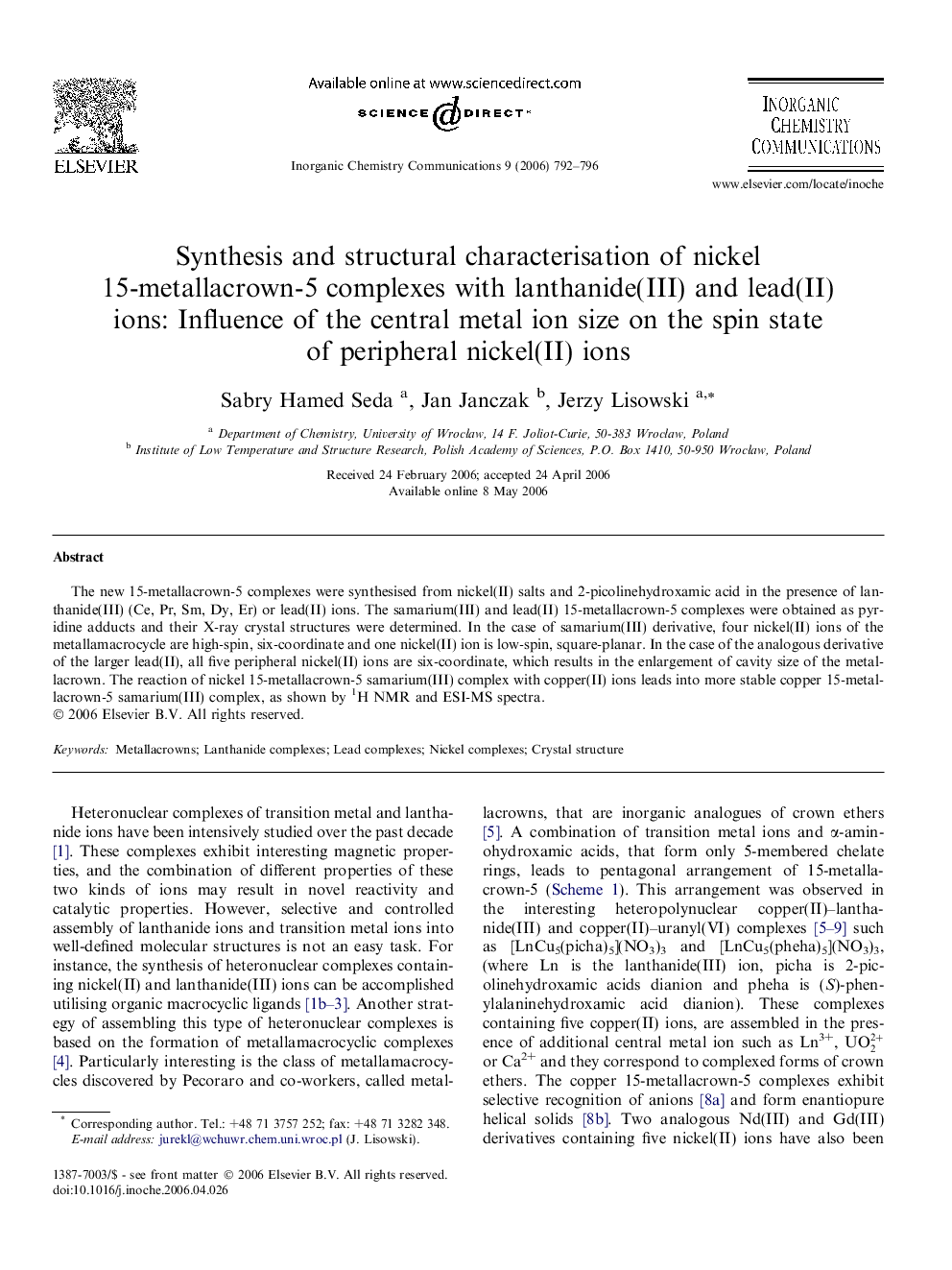| Article ID | Journal | Published Year | Pages | File Type |
|---|---|---|---|---|
| 1302835 | Inorganic Chemistry Communications | 2006 | 5 Pages |
The new 15-metallacrown-5 complexes were synthesised from nickel(II) salts and 2-picolinehydroxamic acid in the presence of lanthanide(III) (Ce, Pr, Sm, Dy, Er) or lead(II) ions. The samarium(III) and lead(II) 15-metallacrown-5 complexes were obtained as pyridine adducts and their X-ray crystal structures were determined. In the case of samarium(III) derivative, four nickel(II) ions of the metallamacrocycle are high-spin, six-coordinate and one nickel(II) ion is low-spin, square-planar. In the case of the analogous derivative of the larger lead(II), all five peripheral nickel(II) ions are six-coordinate, which results in the enlargement of cavity size of the metallacrown. The reaction of nickel 15-metallacrown-5 samarium(III) complex with copper(II) ions leads into more stable copper 15-metallacrown-5 samarium(III) complex, as shown by 1H NMR and ESI-MS spectra.
Graphical abstractThe new 15-metallacrown-5 complexes [LnNi5(picha)5](NO3)3 (where Ln = Ce, Pr, Sm, Dy, Er and picha is 2-picolinehydroxamate) have been synthesised and characterised. The X-ray crystal structures of pyridine adduct of the Sm(III) complex, [SmNi5(picha)5(py)8(NO3)2](NO3), as well as of the analogous Pb(II) derivative [PbNi5(picha)5(py)11](OAc)2 have been determined. The cavity of the 15-metallacrown-5 can adjust to the size of the central metal ion by changing spin state of one of the peripheral Ni(II) ions.Figure optionsDownload full-size imageDownload as PowerPoint slide
